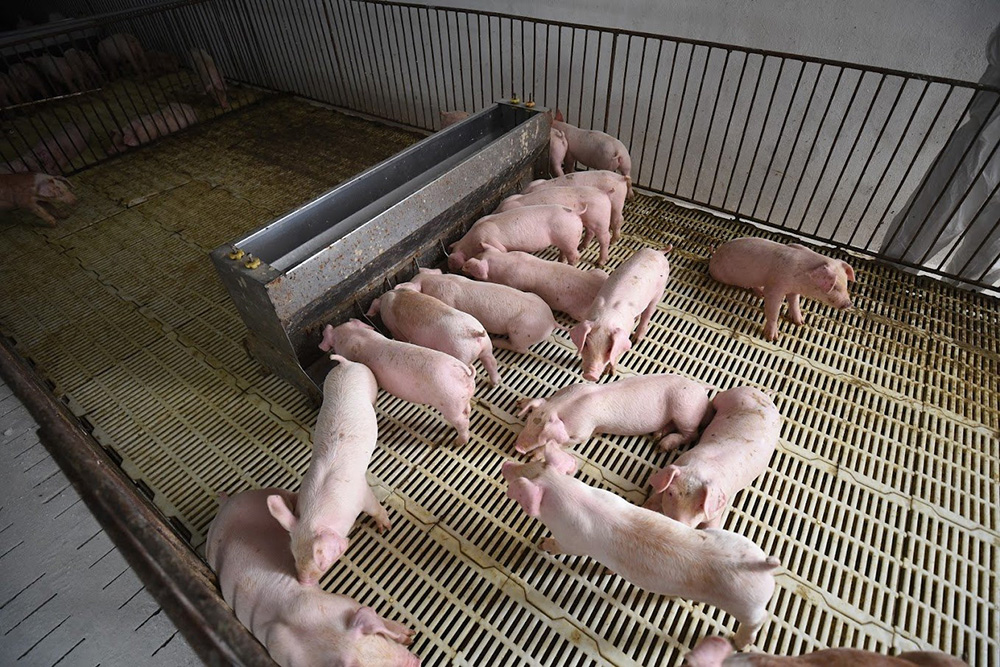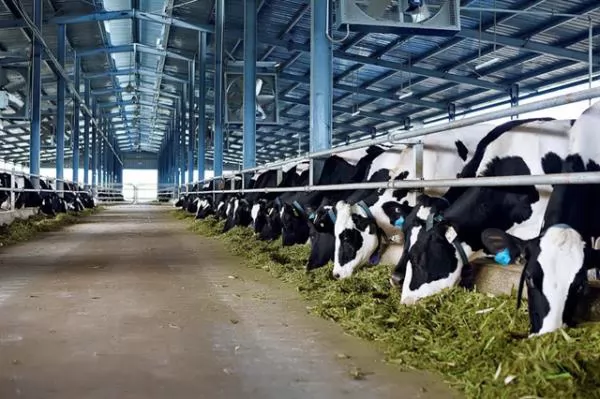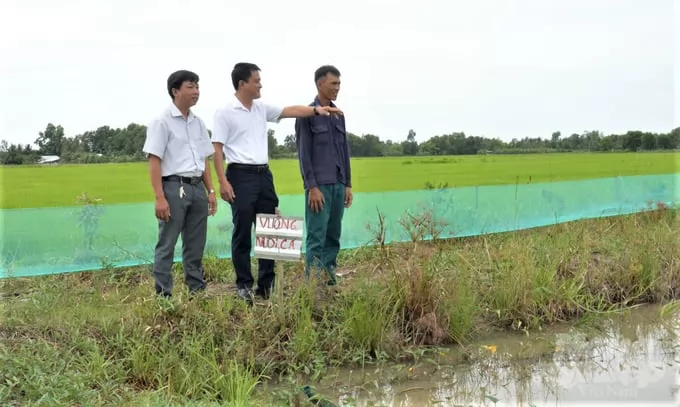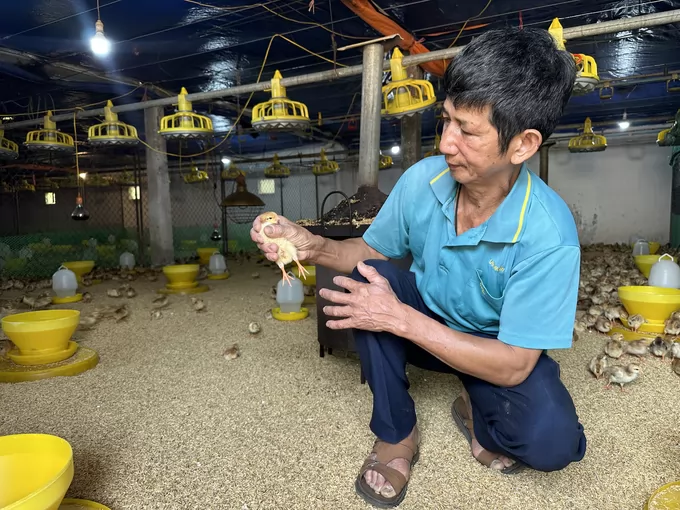Viet Nam's livestock sector makes breakthroughs in breed selection and development

Mr. Do Van Hoan, Deputy Head of the Livestock Breeds Division under the Department of Livestock Production and Animal Health, said that Vietnam's livestock sector has achieved remarkable progress in breed development. Photo: Tung Dinh.
(VAN) Alongside building a National Livestock Gene Bank, the livestock sector aims to refine policies and promote high-tech, large-scale breeding enterprises.
In recent years, Viet Nam’s livestock sector has proactively adopted advanced technologies, particularly biotechnology and Industry 4.0 applications, to improve breeding efficiency and management. Breeding facilities have been upgraded and modernized to meet the requirements for gene preservation, pure-line propagation, hybridization, and breed management.
The sector has identified, assessed, conserved, and effectively utilized many valuable native animal genetic resources, contributing to the diversification and enhancement of livestock quality. Institutional and legal frameworks for livestock breed management have also been gradually improved. Meanwhile, scientists have developed and applied advanced breeding methods such as phenotype evaluation, BLUP, marker-assisted selection, and genomic selection, paving the way for a more modern and sustainable livestock industry.
Through intensified research, selective breeding, and biotechnology application, Viet Nam’s livestock sector has achieved remarkable progress in breed development. For pigs, many high-performance lines have been developed, including Landrace, Yorkshire, LVN, and YVN, along with boar lines such as DVN1, DVN2, TS3, TH12, TH21, and DC1, and various commercial hybrids. Notably, Vietnamese scientists have successfully cloned the native I pig breed using somatic cell nuclear transfer technology, creating a high-quality indigenous line known as IMUDO.
According to Do Van Hoan, Deputy Head of the Livestock Breeds Division under the Department of Livestock Production and Animal Health, in the poultry sector, many new meat and egg-oriented chicken lines such as LV, VP, TP, TN, HA, GT, and VCN-G15 have been developed. Productivity of native breeds like Ri, Mia, Dong Tao, Ho, H’Mong, and Ac has significantly improved, with survival rates rising from 50 - 60% to 90 - 95% and egg production increasing by 25 - 53%. Notably, scientists have applied genetic technologies to identify and reproduce blue-egg-laying chickens to meet market demand.
For waterfowl, super-meat duck breeds VSTP1, VSTP2, seawater-tolerant ducks, and specialized egg-laying duck lines now account for about 65% of the market share in the Red River and Mekong River deltas.
The sector has also developed crossbreeds such as Brahman - Red Angus, DroughtMaster, and BBB cattle, with average daily weight gains of up to 1.4 kg per head. In addition, research has focused on exploiting the genetic resources of Langbiang and Thanh Chuong buffaloes, as well as goats, sheep, and stingless honeybees in the northern midland and mountainous regions.
At the same time, efforts to conserve, preserve, and develop indigenous livestock genetic resources have been strengthened, making an important contribution to diversifying and improving the quality of domestic breeds.
However, most stages of selection, reproduction, production, and management of livestock breeds in Viet Nam still rely on traditional methods. A unified system for breed data management and information sharing is lacking. The application of advanced technologies in breed evaluation and line or strain selection remains very limited.
Individual performance testing is rarely conducted before breeding males are put into production, while standardized procedures for performance evaluation of livestock breeds have yet to be issued. Current testing and certification facilities are insufficient in number and limited in capacity, falling short of the requirements to apply modern technologies in assessing and evaluating livestock breed quality.

Vietnam has successfully cloned the native I pig breed using somatic cell nuclear transfer technology, creating a high-quality indigenous line known as IMUDO. Photo: Tung Dinh.
To promote sustainable livestock breeding, the Department of Livestock Production and Animal Health has identified a focus on developing animal breeds with high productivity, superior quality, and strong adaptability to each region's specific climatic conditions.
“We plan to intensify the application of genetic technologies in breeding to shorten the development cycle, improve efficiency, and accelerate genetic progress. Based on that, we will develop breeds tailored to three market segments: high-yield breeds, high-quality breeds, and those combining productivity and quality. The Department also emphasizes restoring, utilizing, and developing high-value indigenous breeds, contributing to conserving valuable genetic resources and improving farmers’ incomes,” he said.
In the coming period, the livestock sector aims to establish a National Livestock Gene Bank and refine policies to accelerate large-scale breeding projects. Along with prioritizing and encouraging the application of core technologies, biotechnology, and pyramid-based breeding management models, the sector will also enhance support for capable breeding enterprises.
“The upgrading, renovation, and modernization of existing breeding centers will be intensified, together with stronger protection of intellectual property rights in the livestock breeding sector, to attract investment and boost production. The goal is that by 2030, Viet Nam will be able to independently produce high-quality, high-performance parent and commercial breeds to meet domestic demand and reduce reliance on imports.
In addition, we are working to build brands and geographical indications for high-quality indigenous livestock breeds with regional advantages, while selectively importing great-grandparent, grandparent, and purebred high-performance breeds to ‘refresh the bloodlines’ and improve the productivity of domestic herds,” Mr. Hoan shared.
Author: Phuong Linh
Maybe you are interested

Tech important to promoting dairy industry
HÀ NỘI — Việt Nam has significant room to promote the dairy industry with the application of technology in farming and processing to establish a value chain, given the rising demand for dairy products in the domestic and global markets...

Fish farming in rice fields associated with community linkage: Double the benefit
Hau Giang converts 2,000 ha of ineffective rice land to raise fish, building a model of 'fish farming in rice fields associated with community linkage'.

Feeding chickens green tea dust limits reliance on antibiotics
Aware of the danger of antibiotic resistance, Phuong applies biosecurity farming solutions. The recent batch of chickens almost did not need antibiotics.





